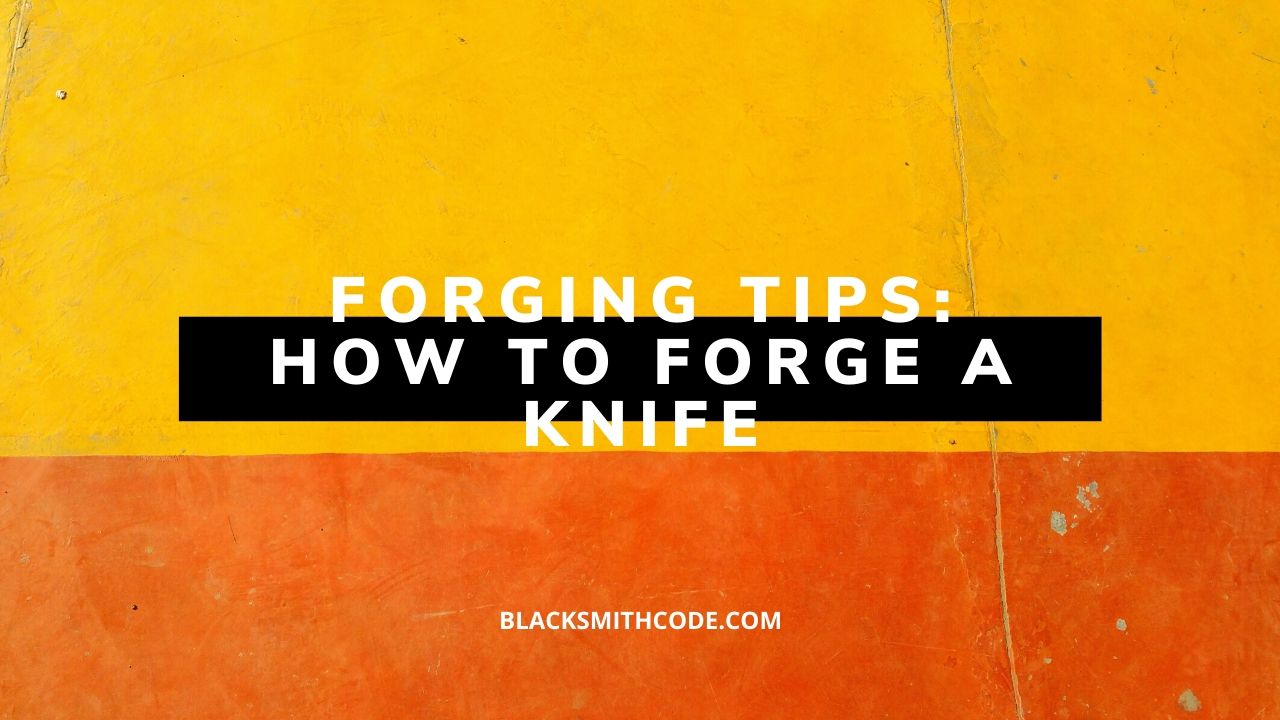A knife is one of the easiest blacksmithing projects to work on for an average blacksmith. Forging knives need some decent steel and specific tools. Before we proceed with forging a knife, it’s essential to have some safety tips at the back of your mind. The primary safety tips advised are:
Ensure that you protect your eyes from the spark from angle grinder
Cut metal while it is hot
Be careful while working with fire
Be cautious with cut metals, even if it appears blurring.
Now let’s go into the details of how to forge a knife.
Steps To Forging A Knife
Step 1: Get The Tools
The first thing to do is to get all the needed tools for the job. The essential tools required for forging knives include; Angle grinder or hacksaw to cut metal to the desired size, fire to anneal the steel, forge, Anvil, Tongs, quench tub, Hot cutter, file, grinder, and fuel for a forge.
Step 2: Work With Fire
Heat the metal you want to use in forging your knife until it becomes red hot. It would help if you started working on your metal as soon as it is red hot before it starts sparking.
Step 3: Pound out the Knife
Once your metal is red hot, it merely means your metal is ready to be beaten to shape. You cannot possibly finish one part of a knife at a time; you have to work the whole thing slowly. While hitting the metal with a hammer on an anvil, you should pound out the pointed tip and work a little bit on the handle area.
Step 4: Thin it Out
Thinning is an essential process when learning how to forge a knife. There is a high probability of your metal becoming too flat after beating; you might have to thin it out. Thinning out the metal will make it start looking like a knife.
Step 5: Cut It Off
After thinning out the parts of the metal that is desired, the next thing to do is to cut off the unwanted parts.
Step 6: Shape Out The Handle
Shape out the handle to your desired size and style. Drawing the handle is done by heating the metal for a few minutes before hitting until the desired shape is achieved. The size and shape of handle is crucial when forging a knife.
Step 7: Hardening The Blade
At this point, the metal should have been reduced such that you can differentiate the blade from the handle. To harden the knife, you have to heat the whole blade beyond red hot, until it becomes orange. You can verify if it is hard enough with the use of a magnet. If the magnet sticks, it is not hard enough, but if it does not, then you are good to go.
Step 8: Quench The Metal and File to Shape
After you are sure your melt is hard enough, you can quench it in a bucket of water and file it to shape. You should also use the file to even out the cutting edge.
Step 9: Finish Up
Finishing up only requires you to fine-tune your work and make it neat. Grind off the rest of the fire scale and put a handle on it. You should also ensure that the knife blade is balanced across the handle.
Conclusion
Forging a knife is one of the most straightforward blacksmithing techniques as long as you have the tools and raw materials. Once your instrument and your steel or metals are ready, you can get your knife done in little more than an hour with the simple steps highlighted above. However, you should ensure that all safety precautions are in place while carrying out the project.

